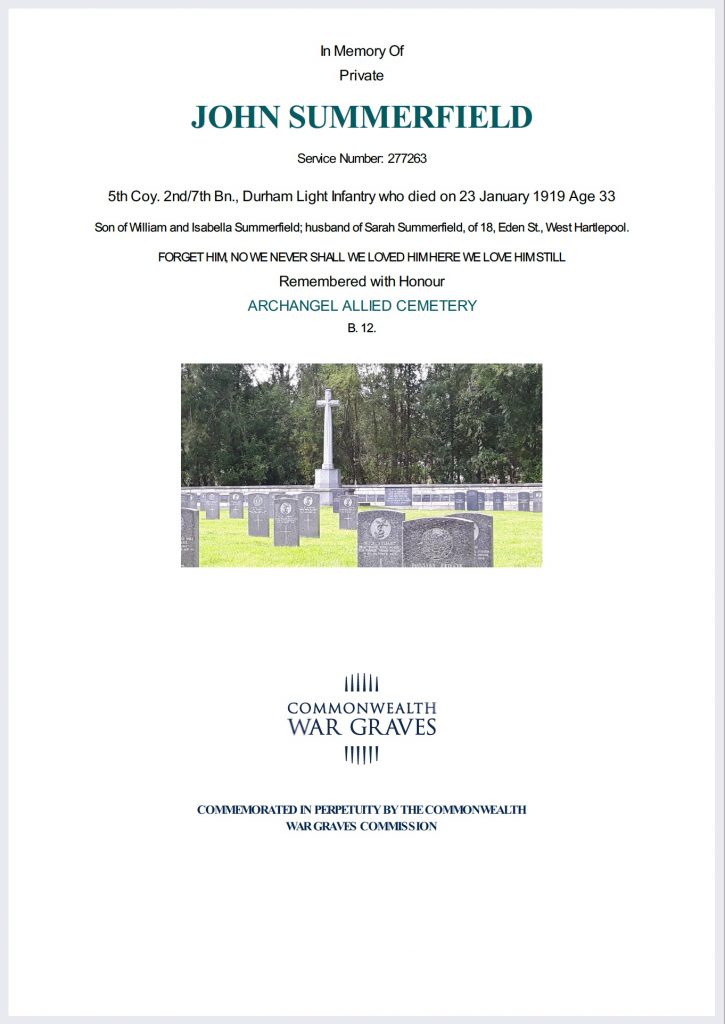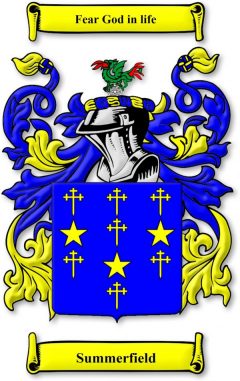Born 31st December 1885. West Hartlepool.
Died 23rd January 1919. Archangel, North Russia.
Married Sarah Lee 15th May 1911. West Hartlepool.
At the time of his birth on 31st December 1885, John Summerfield was living with his parents William, a Merchant Seaman and Isabella (nee Laurie) at 25 Charlotte Street, West Hartlepool. By April 1891 the family was living at 39 Rokeby Street and in 1901, 39 Eden Street, at which time the census has John working as a Barman in a Public House at the tender age of just 16 years. His father is also recorded as being a Barman so it might be that they were working together. The family were still at the same address on 15th May 1911 when John married Sarah Lee, the 23 year old daughter of another long term Eden Street family. Sarah was an unmarried mother with a little boy, George William, who would have been approaching his fourth birthday at the time of the marriage. As a very near neighbour over many years John would have likely grown up with Sarah and have been familiar with her unfortunate circumstances. In the April census of that year we now have John working in partnership with his younger brother Robert as a window cleaning business.
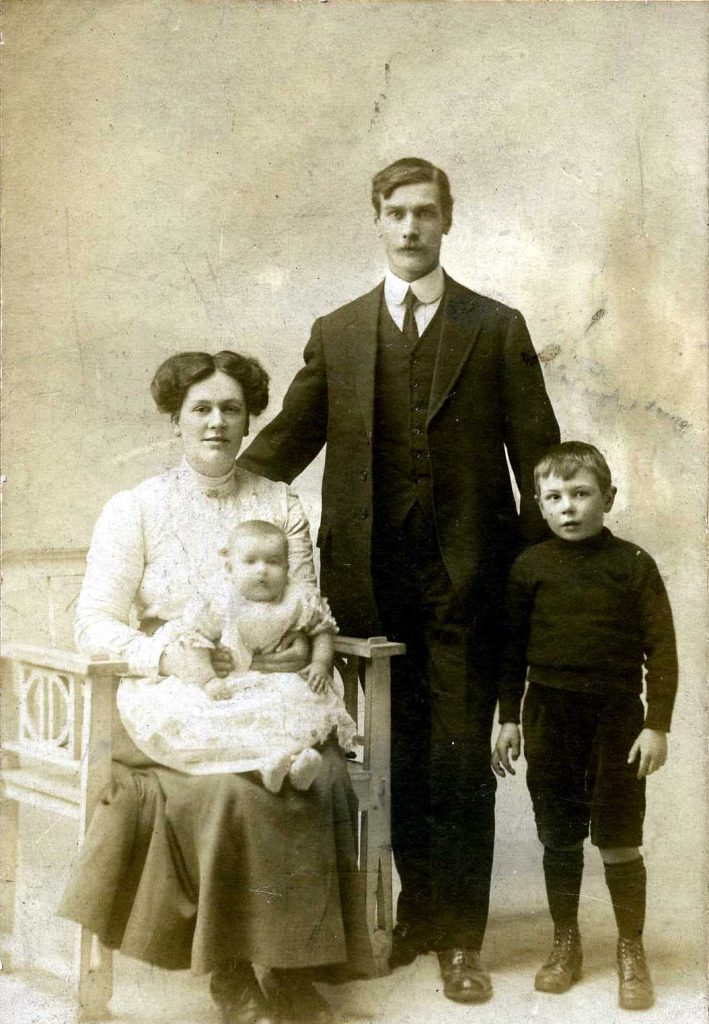
Circa early 1913.
We know little more of John and Sarah until the outbreak of the First World War.
Britain was the sole major European power not to have in place a policy of conscription when war began in August 1914. Individual politicians – of whom Winston Churchill was notable – advocated a form of conscription in 1914; such voices were not influential however, and there was broad agreement with Foreign Secretary Sir Edward Gray’s assessment that Britain could maintain its European policy with a volunteer army.
Growing battlefront demand however soon outstripped volunteer numbers and in May 1915 Prime Minister Herbert Asquith appointed Lord Edward Derby – himself an opponent of conscription – as Director-General of Recruitment, tasked with rapidly boosting Britain’s volunteer army. Derby’s solution was the so-called ‘Derby Scheme’. This encouraged men, and I think that this would have included John Summerfield because of the date of his attestation, which was 30th November 1915, to voluntarily register their name on the principle that once registered they would be called up for service only when necessary. As an added incentive married men were advised that they would only be called up once the supply of single men was exhausted. For John this occurred when he was mobilized on 26th July 1916.
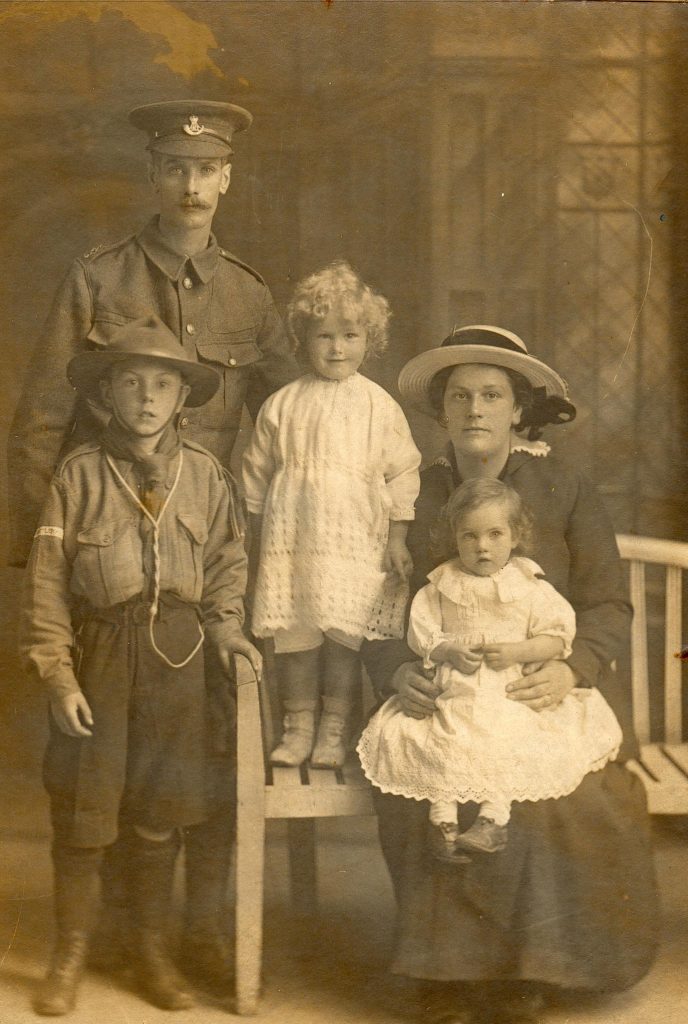
I am not confident that John was a happy recruit because the day after being mobilized he was, according to his Service Records, in trouble with the Military Foot Police and was issued with a severe reprimand.
On mobilization John was attached to the 3/7th Battalion Durham Light Infantry, but this unit was soon absorbed into the 5th Reserves DLI on 1st September 1916 based in Newcastle and then moved to Redcar in October. John’s unit was soon to get involved with the war effort and sailed from Folkestone to Boulogne on 13th November 1916 where they were shortly afterwards reassigned to the Pioneer Battalion of the 50th (Northumbrian) Division DLI. Pioneer battalions first appeared in the British army during the Great War and took the roll that was deemed the exclusive province of the Royal Engineers. These battalions largely comprised men who came from industrial backgrounds and would have been employed in mining, construction, stone masonery etc in civilian life. Pioneers were also infantry soldiers and were kitted out as such, often found in the thick of it when extra manpower was needed.
John didn’t last at the front in Flanders for very long because on the 21st January 1917 he was evacuated from the field admitted the following day to Number 16 Field Ambulance with Nephritis. Two days later moved to No1 Australian General Hospital at Rouen with Bronchial Catarrh. By the 6th February he was on his way back to England on the Hospital Ship HMHS Lanfranc, an ocean liner requisitioned as a hospital ship in the First World War.

Interestingly, this hospital ship was actually sunk a couple of months later by the German U-boat UB 40 on 17th April 1917, 4 miles North East of Le Havre (There is a video online of a dive team who filmed the wreck in 2011). By 7th February he was in 3rd Western General, a Territorial Force General Hospital in Cardiff, with Lobar Pneumonia, where he stayed until 20th April of that year.
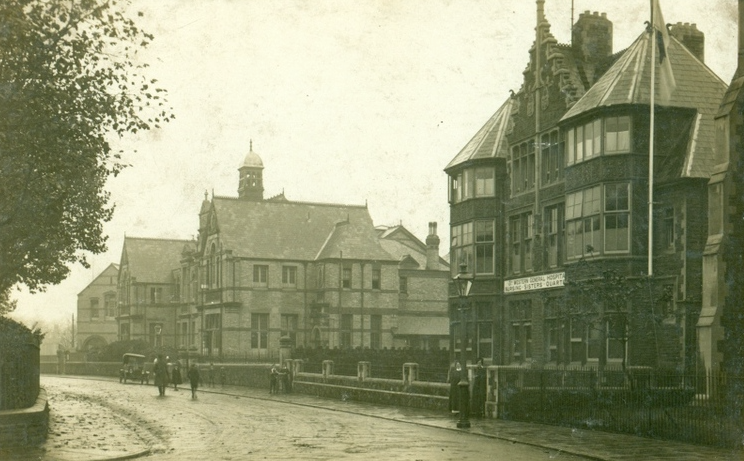
John’s next period of service proved to be somewhat troubled and his earlier run in with authority proved to be not his last. His Service Records show that on 8th August 1917 he is in trouble again, this time Absent in Friar Street, Reading at about 10.20pm. He is given another Severe Reprimand and his records show that he now has the rank of Lance Corporal. 18th October 1917 more trouble, in Hornsea, Yorkshire now and without reasonable excuse allowed a person connected to his charge to escape. This time he is relieved of his only recently acquired Lance Corporal stripe. By the 31st October he has transferred from Hornsea to the 2/7th DLI based in Colchester, Essex. November 1917, now a Private and ‘In Trouble’ once more.
Its impossible to tell from records nearly a hundred years old just what all this getting into trouble was about, maybe just a reluctant soldier who didn’t take to authority easily. But, his next, and last, incident we might have some empathy for. On 30th March 1918 he was certified by the medical authorities as ‘Fit For Service Abroad”. After being evacuated from the field in France and spending a couple of months convalescing in hospital and with the Allied Forces perhaps starting to gain the upper hand in the war, he might be excused for thinking he might not be needed abroad again. But the records show that on that same day he was ‘in trouble’ yet again. Perhaps he knew what was planned for him because on the 7th October 1918 the 2nd/7th Battalion DLI embarked on hired military transport, SS Goentoer (a Dutch steamship from Rotterdam that had been requisitioned by the British Government) and sailed from Glasgow arriving a couple of weeks later at Archangel, Russia, as part of the Allied Intervention in North Russia after the October Revolution, fighting the Bolsheviks.
The rest of Johns life story is indeed short, on 17th January 1919 he is recorded as ill with Pneumonia and admitted to the 82 Casualty Clearing Station, Bakaritza, which was a port district of Archangel.
By the 20th January he was recorded as still being in the 82 Casualty Clearing Station but was dangerously ill.
23rd January 1919 recorded as having died of Broncho Pneumonia. John was buried in the ARCHANGEL ALLIED CEMETERY which is at Archangel, in the north of the Russian Federation, a town on the eastern side of the Divina Estuary on the White Sea. The cemetery was begun immediately after the occupation of the town in August 1918 by the Allied force sent to support the Soviet Russian Government against potential threat from German occupied Finland and other local sources. It was used by No 85 General Hospital, No 53 Stationary Hospital, No 82 Casualty Clearing Station, HM Hospital Ship ‘Kalyan’ and other Allied hospitals.
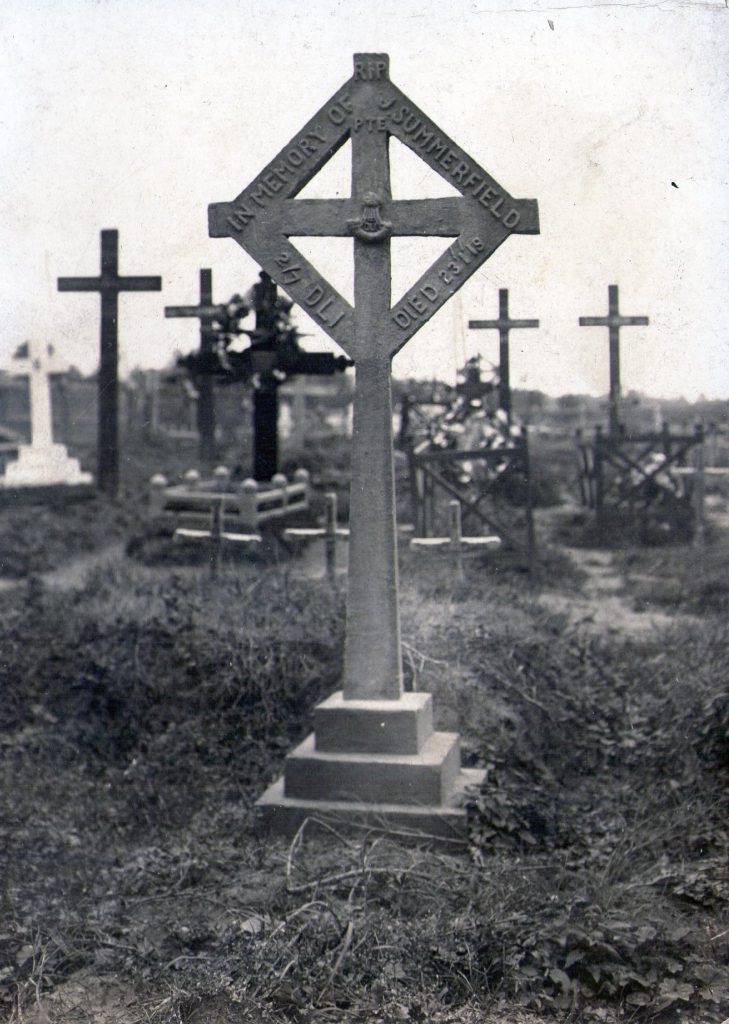
Having my perspective formed nearly a hundred years after this time with a ‘nanny state culture’ increasingly widespread, including councils banning hanging baskets in case they fall down, hospitals banning flowers to prevent infection and schools stopping children playing conkers, I find it perplexing that a soldier having such a history of health fragility could be sent to serve on sentry duty in North Russia in the middle of winter. I also find it so sad that he died after the end of the war, when the worst of the conflicts had been finished for over two months.
The only story my father ever told me about John Summerfield, and at that time I would have believed than John was his blood related father, was about his death. I can’t remember for certain but at some point I must have asked how his father had died, and he told me that he had been in Russia and was on Sentry Duty, which of course does fit in with the unit being a Garrison Guard Battalion in Archangel. He told me that the guards would whistle to each other during the night to let each other know that things were OK. When there was no whistle from John on this occasion they went to find out what was wrong and found him frozen to death. I know now that the very last part wasn’t exactly the case because he died in hospital, but perhaps he was found near to death, he certainly was very ill and died quickly afterwards. Also, this may well have been the story that this 11-year-old boy was told at the time by his mother and remembered all his life. Recently, my cousin Susan, the daughter of their eldest daughter Catherine, my Aunt Kitty, told me the exact same story of his death as told to her by her mother. I have probably had more access to military records and information than either my dad or his mother would have had at the time. My grandfathers silver fob watch was returned to his wife along with I would imagine other of his effects, and that watch was given to my father when his mother died in 1973. My father gave it to me before he died in 1998 and I have no doubt I will pass it on at the right time.
These are the only two pictures I have been able to find of John Summerfield, one about 1913 with my Dad and my Aunt Kitty who was born in 1913 and one which would have been taken sometime shortly before he was mobilized in July 1916 with my dad and Kitty now being joined by my Aunt Sadie. The third sister, my Aunt Bella (Isabella), wasn’t born until December 1918 by which time John was already serving in Russia and therefore never had the opportunity to see his newborn little girl.
